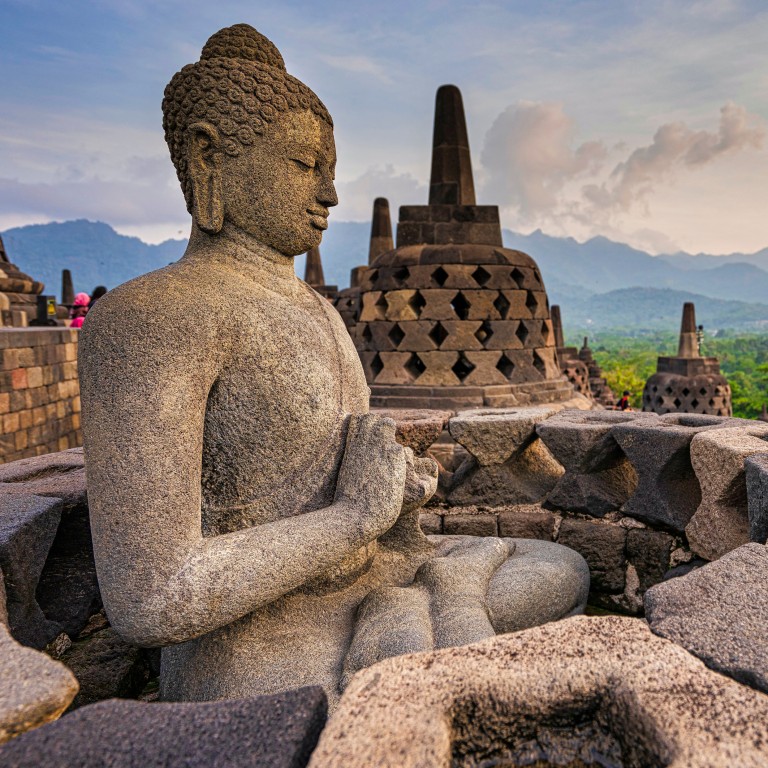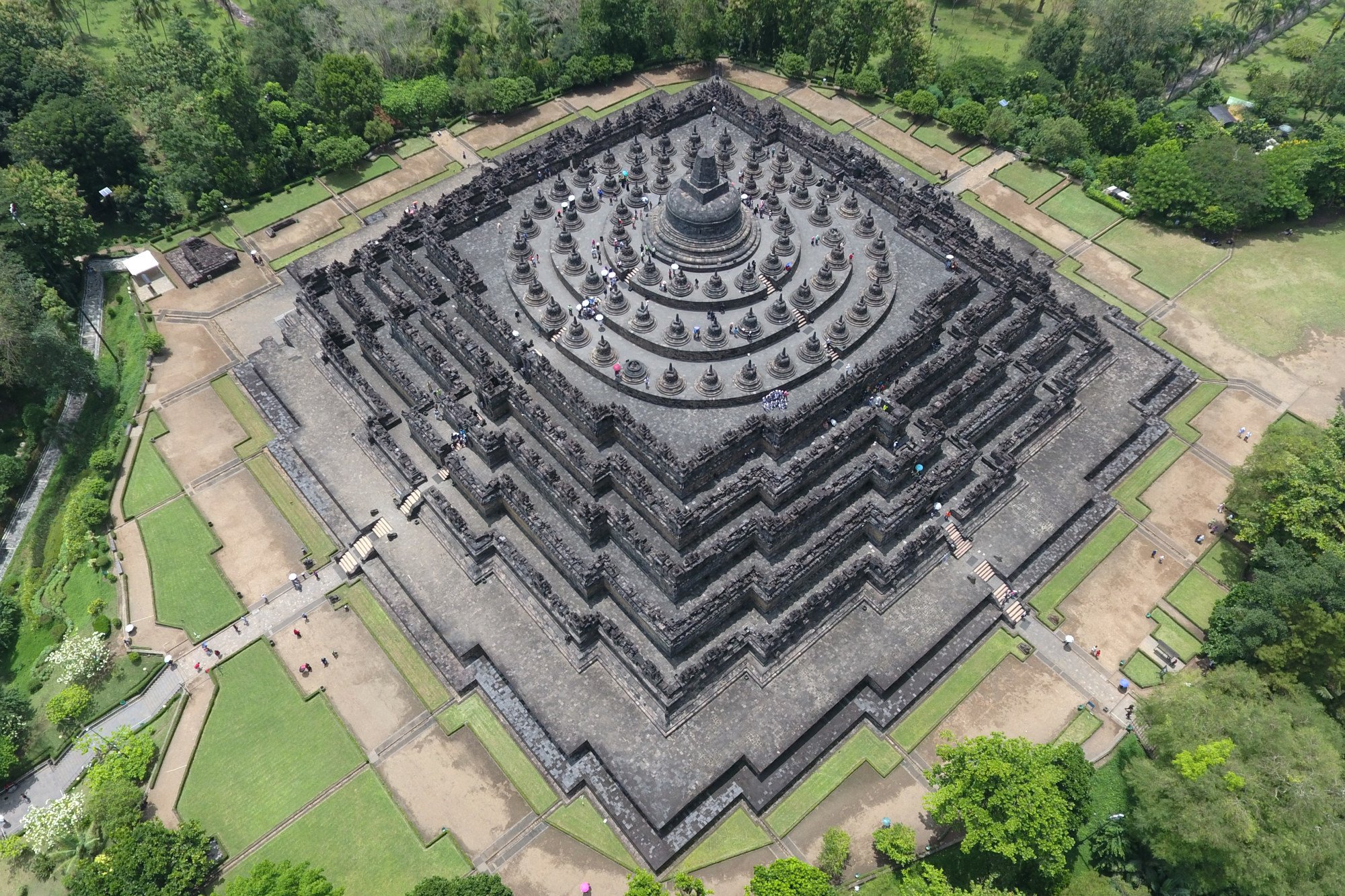
Will Indonesia’s quality tourism plan push out domestic visitors from Borobudur?
- A proposal to raise entry fees for domestic visitors to the ancient temple by 1,500 per cent has been met with anger and disbelief
- The controversy highlights the challenge Indonesia faces in striking the right balance between economic growth, sustainability and accessibility
Indonesia’s ancient Borobudur Temple, the world’s largest Buddhist holy site, is in the spotlight as the country navigates growing its travel sector while ensuring tourism remains sustainable.
The sacred 9th-century temple has long been a tourist attraction, drawing up to 4 million local and international visitors every year before the pandemic.
Indonesia wants to further promote Borobudur, including it in a list of five “super priority tourist destinations” in its push for quality tourism. But conscious of overtourism concerns, it believes raising entry fees from the current 50,000 rupiah (US$3.44) while limiting the daily number of visitors is vital.
Bali’s back – but so are the ‘trashy tourists’
The right ticket price, however, is a fraught subject, as the government found out recently after officials announced – then backtracked from – a proposal to raise fees to 750,000 rupiah (US$51) for locals wanting to climb to the upper levels of Borobudur. Foreigners would have to pay US$100.
The proposed price hike was met with anger and disbelief in Indonesia. In Central Java, where Borobudur is based, the minimum wage is US$124 per month. In 2018, about 90 per cent of the 4 million total annual visitors to Borobudur were domestic tourists.
“Borobudur is a centre of education and knowledge that should be accessible to those who have an interest in its history and life around it,” Halik Sandera, the executive director of the Indonesian Forum for Environment in Yogyakarta told This Week in Asia.
“If ticket prices are increased, it only makes it accessible for those who can afford it, but what about those who can’t? It needs to be fair so that everyone can visit.”

Coordinating Minister for Maritime Affairs and Investment Luhut Binsar Panjaitan, who announced the decision on June 4 on Instagram, said the proposed tariffs would help to preserve the historical site. The original price of 50,000 rupiah would now only allow visitors to enter the temple complex but not climb the structure, he said, while student tickets would remain at 5,000 rupiah (US$0.34).
But such was the backlash that on June 7, Pandjaitan and the governor of Central Java, where Borobudur is located, appeared to have shelved the proposal.
“The Minister said, ‘Mr Governor, we will postpone it so that there will be no stories going all over the place’,” Ganjar Pranowo told reporters. “I told him that there are a lot of protests. I think let’s leave it first, and he agreed.”
The governor added that officials would discuss the matter further with stakeholders such as the Borobudur Temple Tourism Park and the Borobudur Conservation Center.

But ticket prices aren’t the only concern for Borobudur and similar historical sites across Indonesia.
Sandera said he was concerned about the effects of designating Borobudur a “super priority” destination – which means it will be developed to better accommodate visitors. The other four priority sites are Labuan Bajo in East Nusa Tenggara, Likupang in North Sulawesi, Lake Toba in North Sumatra and Mandalika in West Nusa Tenggara.
“Making Borobudur a National Strategic Project will be followed by an increase in the conversion of land functions around it,” said Sandera. “Increased development will result in increased exploitation of natural resources. The growth of regional infrastructure and tourism infrastructure will lead to more waste, both solid and liquid.”
As tourism restarts, what are the dos and don’ts of post-pandemic travel?
Before the pandemic, about 8,000 to 10,000 people visited Borobudur every day. Indonesian Minister of Tourism and Creative Economy Sandiaga Uno said visitor numbers would need to be capped at 1,200 daily, or 400,000 to 500,000 per year, to protect the temple, which was declared a Unesco World Heritage Site in 1991.
“Each time a visitor climbs the Borobudur, the temple stones will wear away,” he said on June 6. “The temple is part of our civilisation, it is our heritage, and inherited from our ancestors. We must also ensure that Borobudur will be an environmentally-friendly destination.”

Clement Gultom, a tour operator in Medan in North Sumatra, said he agreed with the proposal to limit visitors.
“For many years, I’ve wondered why such a world-class heritage site must accommodate thousands of visitors on a daily basis” when it was not built to withstand so many people walking on it at once, he said. “Borobudur has different levels and each of those levels constantly has to carry a dynamic number of tourists.”
Gultom said the push for quality tourism also meant visitors must understand the historical and religious significance of Borobudur.
“I think a very low percentage of visitors, especially domestic ones, understand that to go to the top stupa, one must go around each level to understand the meaning of those stone carvings that symbolise the philosophy of the Buddhist way of life,” he said.

The temple, built during the Sailendra Dynasty, has an ascending structure leading to a central dome which features 72 Buddha statues sitting on a perforated stupa or mound.
It serves as a place of pilgrimage, with devotees following a path around the structure before ascending through three levels which represent Buddhist cosmology: the Kamadhatu level representing the world of desire, the Rupadhatu level representing the world of forms and the Arupadhatu level representing the world of formlessness.
“There should be an agreement among institutions, including the government, to determine who and why someone should be allowed to go to the top of Borobudur,” Gultom said.
“I just can’t believe that for many years the government let people with dirty and sandy shoes freely climb and take photos at the Arupadhatu level. They don’t respect the heritage,” he said, noting that such rules applied at other places of worship.
“We are not allowed to enter temples in Bali without following certain procedures, or the Kratons (palaces) in Yogyakarta and Solo or all mosques.”
As intolerance grows, Muslim-majority Indonesia plans global Buddhist hub
Julian Nugroho, a local resident from Yogyakarta, the city through which many visitors access Borobudur, said he believed price increases were necessary, but that the proposed 750,000 rupiah fee was expensive if it only included footwear, appropriate clothing and guides.
“A fee of 250,000 Indonesian rupiah (US$17.16) and US$30 for foreign tourists is enough to deter people who don’t respect the temple,” he said. “And local Buddhists should be able to visit for free.”
Nugroho said that whatever price the government ultimately decided upon needed to be comparable to other world attractions, such as Egypt’s Great Pyramid of Giza, which costs around US$20 to enter, and the Angkor Wat in Cambodia, where a one-day ticket costs US$37.
When contacted, Borobudur Temple Tourism Park declined to comment on the proposed tariffs. Unesco Jakarta did not respond to a request for comment.

